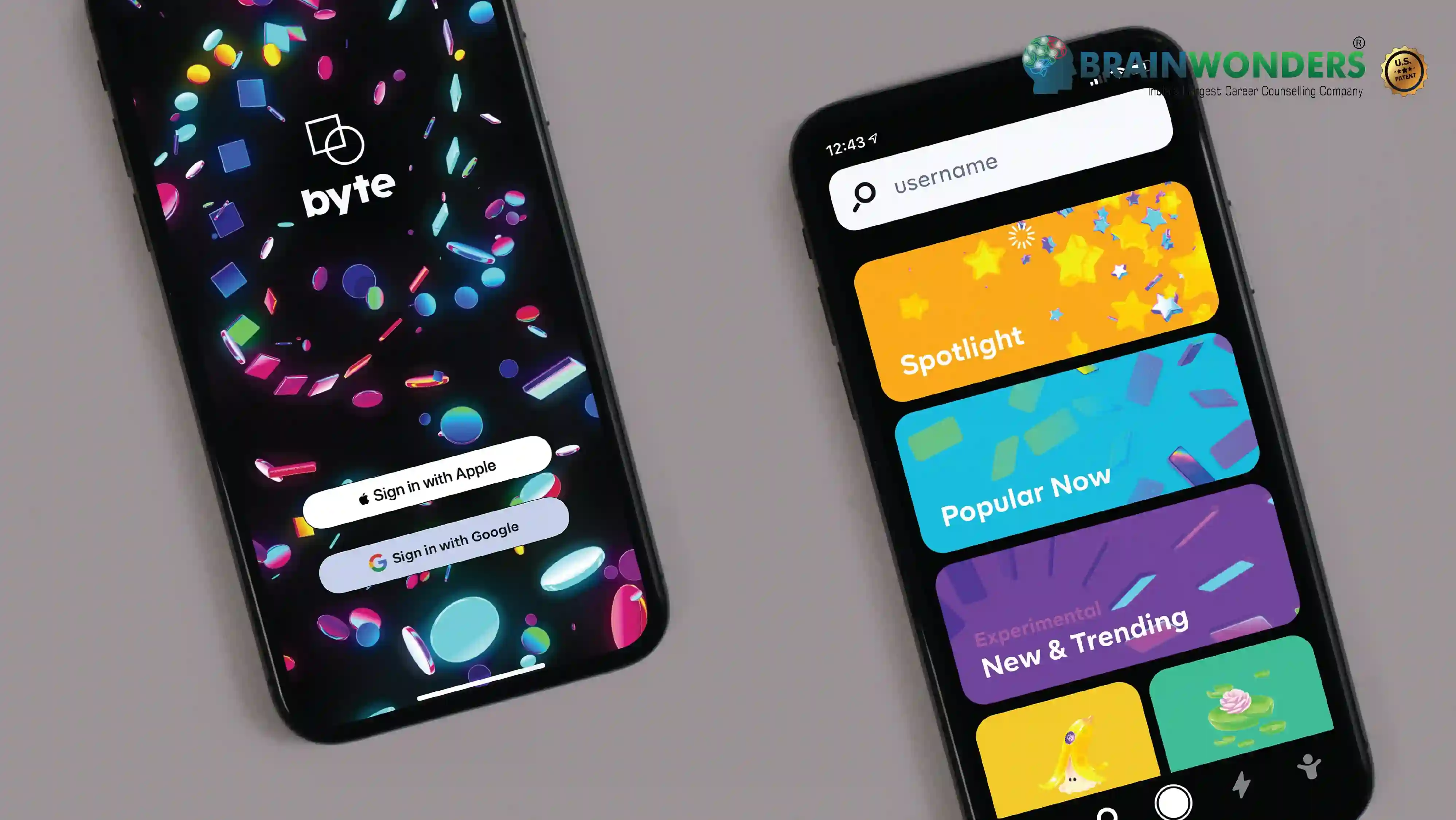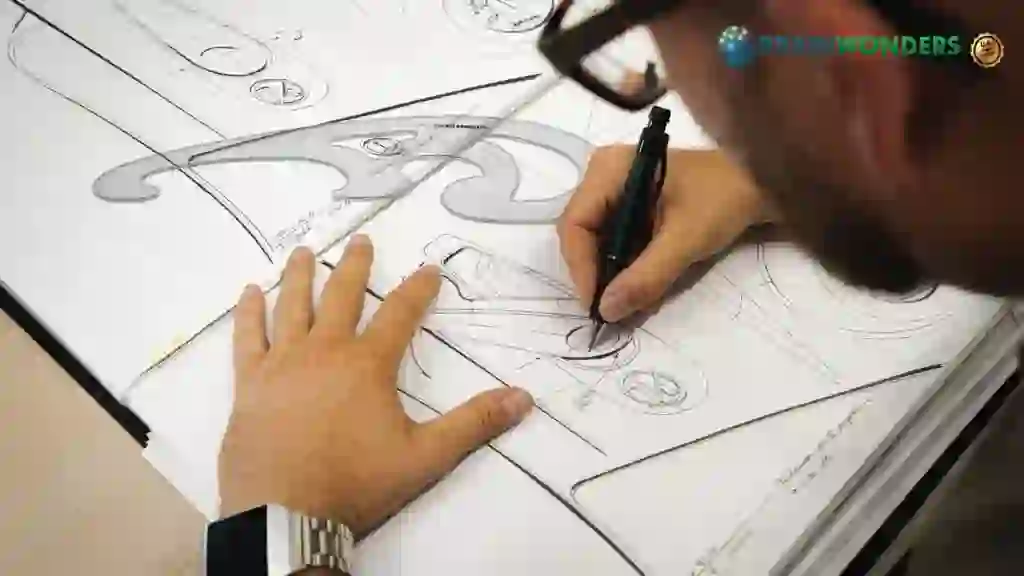How to become an UI Designer
Overview, Courses, Exam, Colleges, Pathways, Salary

Overview
Who is UI Designer ?
A UI (User Interface) designer is a professional who focuses on creating visually appealing and user-friendly interfaces for digital products and applications. They play a critical role in designing the visual elements and overall layout users interact with on websites, mobile apps, software, and other digital platforms. The goal of a UI designer is to enhance user satisfaction and ensure a seamless and intuitive user experience.
UI designers collaborate closely with UX (User Experience) designers, developers, and other stakeholders to understand user needs, translate them into visual design concepts, and create interactive prototypes. They design elements such as buttons, menus, icons, color schemes, typography, and visual hierarchy to create an aesthetically pleasing and cohesive user interface.
UI designers use various design tools and software, such as Sketch, Adobe XD, or Figma, to create wireframes, mockups, and interactive prototypes. They consider usability principles, branding guidelines, and industry best practices to create visually engaging and consistent designs across different devices and platforms.
Typical day at work
What does UI Designer do?
A UI (User Interface) designer creates visually appealing and user-friendly interfaces for digital products and applications. They work closely with UX (User Experience) designers, developers, and other stakeholders to design the visual elements and interactions that users interact with on websites, mobile apps, software, and other digital platforms. The primary responsibilities of a UI designer include:
- Visual Design: UI designers create the visual aspects of an interface, including layout, color schemes, typography, icons, buttons, and other graphical elements. They use design principles and tools to craft aesthetically pleasing and cohesive designs that align with the brand identity and user preferences.
- Wireframing and Prototyping: UI designers use wireframing and prototyping tools to create low-fidelity and high-fidelity interface representations. These wireframes and prototypes help visualize the interface's structure, layout, and flow, enabling effective communication with stakeholders and guiding the development process.
- Interaction Design: UI designers define how users interact with the interface. They create interactive elements, transitions, and animations to enhance the user experience and guide users through the interface. Interaction design makes the interface intuitive, engaging, and responsive to user actions.
- Responsive Design: UI designers ensure the interface is responsive and adapts to different devices and screen sizes. They consider the various resolutions, orientations, and platforms to deliver a consistent and optimized experience across devices like desktops, tablets, and mobile devices.
- Collaboration with UX Designers: UI designers collaborate closely with UX designers to align the visual design with the overall user experience strategy. They work together to understand user needs, conduct user research, and translate insights into a visually appealing and usable interface.
- Design System and Style Guide: UI designers contribute to developing design systems and style guides. These resources define the visual guidelines, components, and patterns to ensure consistency and efficiency in the design process.
- Usability Testing and Feedback: UI designers participate in usability testing sessions and gather feedback from users to assess the effectiveness and usability of the interface. They analyze user behavior and incorporate user feedback to make iterative design improvements.
- Collaboration with Development Teams: UI designers collaborate with development teams to ensure the implementation of the design vision. They provide design assets, specifications, and support throughout development to ensure the final product matches the intended design.
Abilities and Aptitude needed
What are the skills, abilities & aptitude needed to become UI Designer?
To become a successful UI (User Interface) designer, you will need a combination of technical skills, creative abilities, and specific aptitudes. Here are some essential skills, abilities, and aptitudes that are important for a UI designer:
- Visual Design Skills: Proficiency in visual design is crucial for a UI designer. It would help if you had a strong understanding of layout, composition, color theory, typography, and other graphic design principles. Mastery of design tools like Sketch, Adobe XD, Figma, or Photoshop is essential.
- User-Centered Design: A UI designer needs to have a deep understanding of user-centered design principles. It involves empathy for users, conducting user research, analyzing user behavior, and incorporating user feedback into the design process.
- Interaction Design: The ability to create meaningful and intuitive interactions is vital. You should have skills in designing user flows, micro-interactions, animations, and transitions that enhance the user experience and guide users through the interface.
- Prototyping and Wireframing: Proficiency in creating prototypes and wireframes helps you visualize and communicate design concepts quickly. Skills in using prototyping tools like InVision, Axure, or Framer can facilitate the creation of interactive and high-fidelity prototypes.
- Responsive Design: Knowledge of responsive design principles is essential as interfaces are accessed on various devices and screen sizes. Being able to design interfaces that adapt and display correctly across different resolutions and devices is essential.
- Collaboration and Communication: UI designers collaborate with various stakeholders, including UX designers, developers, and clients. Strong communication skills help you effectively convey design ideas, understand project requirements, and work collaboratively.
- Attention to Detail: UI design requires a keen eye for detail. Consider spacing, alignment, consistency, and other small design elements to ensure a polished and visually coherent interface.
- Problem-Solving: UI designers need strong problem-solving skills to address design challenges and find innovative solutions. The ability to analyze user needs, identify design problems, and develop effective design solutions is essential.
- Time Management: UI designers often work on multiple projects and have to meet deadlines. Practical time management skills help you prioritize tasks, manage your workload, and deliver high-quality designs on time.
- Continuous Learning: The field of UI design is constantly evolving, with new design trends, technologies, and tools emerging. Having a passion for learning, staying updated with industry trends, and seeking opportunities for professional development are essential for growth and success as a UI designer.
Salary
Salary for UI Designer?
Minimum Monthly Salary: Entry-level UI designers in India may earn a minimum monthly salary of around INR 25,000 to INR 40,000. These are typically individuals who have recently started their careers in UI design and have some foundational skills and experience in creating visually appealing user interfaces.
Maximum Monthly Salary: Experienced and highly skilled UI designers with a strong portfolio, expertise in design tools, and a deep understanding of user behaviour may earn anywhere from INR 50,000 to INR 1,50,000 or more per month. The salary can vary based on factors such as the size and reputation of the company, the complexity of the projects they work on, and their level of responsibility within the design team.
Annual Salary: The annual salary may range from INR 3,00,000 to INR 4,80,000 for entry-level or junior UI designers. As UI designers gain more experience, specialize in specific areas of UI design (such as mobile app design, web design, or game design), and take on more challenging projects, their annual income can increase to approximately INR 6,00,000 to INR 18,00,000 or higher.
Highest Paying Jobs and Scope: UI designers with expertise in creating exceptional user experiences across various platforms (such as mobile, web, and desktop) or who focus on specialized areas like motion design or interactive design may command higher salaries due to their unique skill set.
Pathways
How to become an UI Designer?
Entrance Exam
Entrance Exam for UI Designer ?
Under Graduate entrance exam:
GGSIPU-CET (Guru Gobind Singh Indraprastha University- Common Entrance Test).
NID (National Institute of Design).
SET - Symbiosis Entrance Test
Christ University Entrance Exam
Delhi University merit based
Ashoka University
Post Graduate entrance exam:
MIT Institute of Design entrance
Courses
Which course I can pursue?
Best Colleges
Which are the best colleges to attend to become an UI Designer?
Industries
Which Industries are open for UI Designer?
UI (User Interface) design is versatile across various industries and sectors. Here are some industries where UI designers are in demand:
- Technology and Software Development: UI designers are sought after in technology companies that develop software, web applications, mobile apps, and digital platforms. These companies recognize the importance of intuitive and visually appealing user interfaces to enhance user experiences.
- E-commerce and Retail: Online retailers and e-commerce platforms require UI designers to create user-friendly and visually engaging interfaces for their websites and mobile apps. UI design is crucial in facilitating smooth navigation, showcasing products, and optimizing the shopping experience.
- Media and Entertainment: Media companies, streaming services, gaming companies, and entertainment platforms employ UI designers to create captivating interfaces that engage users. UI design enhances the user experience in video streaming, content discovery, gaming interfaces, and interactive media applications.
- Financial Technology (Fintech): Fintech companies that provide digital financial services, such as banking apps, investment platforms, and payment solutions, rely on UI designers to create interfaces that instill trust, facilitate easy financial transactions, and deliver seamless user experiences.
- Health Tech and Digital Health: UI designers are crucial in designing user-friendly interfaces for healthcare applications, telemedicine platforms, wearable devices, and health monitoring tools. They contribute to creating interfaces that are intuitive and accessible and promote positive health outcomes.
- Education Technology (EdTech): EdTech companies that develop online learning platforms, e-learning tools, and educational apps require UI designers to create interfaces that facilitate effective and engaging learning experiences for students, teachers, and administrators.
- Travel and Hospitality: Travel booking platforms, hotel reservation systems, and travel-related apps hire UI designers to create interfaces that simplify the booking process, provide relevant information, and enhance the overall travel experience for users.
- Automotive and Mobility: With the increasing integration of digital interfaces in vehicles and connected car technologies, UI designers must create intuitive and user-friendly interfaces within automobiles. They contribute to creating interfaces that provide easy access to information, entertainment, and navigation features.
- Government and Public Services: Government agencies and public service providers recognize the importance of user-centered design in delivering efficient and accessible digital services. UI designers contribute to creating user-friendly government websites, mobile apps, and online platforms for citizen engagement and service delivery.
internship
Are there internships available for UI Designer?
Yes, there are internships available for UI (User Interface) designers. Internships provide valuable opportunities for aspiring UI designers to gain practical experience, work on real-world projects, and enhance their skills. Here are a few sources where you can find UI design internships:
- Companies and Organizations: Many companies, particularly technology companies, and startups, offer internships specifically for UI design. These internships can be found in technology, e-commerce, media, finance, and more industries. Companies may have dedicated internship programs or opportunities posted on their websites or job portals.
- Design Agencies: Design agencies often have internships for aspiring UI designers. These agencies work with various clients and projects, providing interns exposure to various design challenges and the opportunity to work alongside experienced designers.
- Tech Incubators and Innovation Labs: Tech incubators and innovation labs, often associated with universities or entrepreneurial ecosystems, offer internships where UI designers can work on cutting-edge projects and collaborate with startups or research teams.
- Digital and Creative Studios: Digital and creative studios specializing in UI design, user experience design, or interactive media may have internship programs for UI designers. These studios focus on creating exceptional digital experiences and often have a design-oriented solid culture.
- Academic Institutions: Universities and colleges with design programs may have internship opportunities for their students. These internships may be arranged through cooperative education or internship programs within the institution or through partnerships with industry organizations.
- Online Platforms and Job Boards: Online and job boards focused on design or UX-related fields often have internship listings. Websites such as Behance, Dribble, LinkedIn, Glassdoor, and Indeed can provide internship leads for UI designers.
Career outlook
What does the future look like for UI Designer?
The future of UI (User Interface) design looks promising and holds numerous opportunities. As technology advances and digital experiences become increasingly integral to our daily lives, the demand for skilled UI designers is expected to grow. Here are some key aspects shaping the career outlook for UI designers:
- Increased Emphasis on User Experience: Companies recognize the importance of delivering exceptional user experiences to gain a competitive edge. UI designers, focusing on creating intuitive and visually appealing interfaces, are crucial in ensuring positive user experiences.
- Growing Importance of Mobile and Responsive Design: With the widespread use of smartphones and mobile devices, UI designers will continue to play a significant role in designing responsive and optimized interfaces for different screen sizes and platforms.
- Integration of Emerging Technologies: UI designers will have opportunities to work with emerging technologies such as augmented reality (AR), virtual reality (VR), voice interfaces, and Internet of Things (IoT) devices. These technologies require innovative and user-friendly interfaces, presenting exciting challenges and possibilities.
- Collaborative Design Processes: UI designers are increasingly collaborating with cross-functional teams, including UX designers, developers, and stakeholders, to ensure a holistic approach to design. This collaborative environment fosters creativity, innovation, and a more user-centered design process.
- Remote Work and Global Opportunities: The COVID-19 pandemic has accelerated the adoption of remote work and distributed teams. This trend allows UI designers to work with companies and clients from different locations, providing access to a global job market.
- Continuous Learning and Skill Development: UI design is a rapidly evolving field, with new tools, technologies, and design trends emerging regularly. Continuous learning and skill development will be crucial to stay up-to-date with the latest design practices and maintain a competitive edge in the industry.







